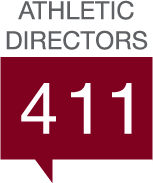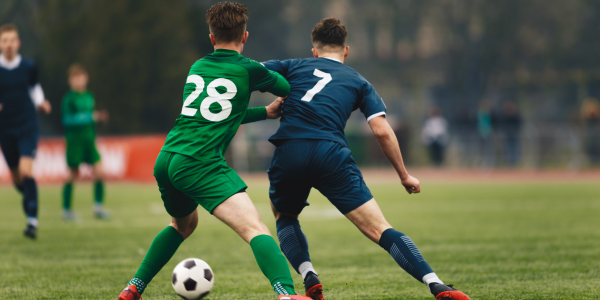In 2024, the House v. NCAA case took center stage in the world of collegiate athletics, marking a pivotal moment in how athletes are compensated. This historic antitrust lawsuit and its resulting settlement are poised to redefine college sports, presenting new challenges and opportunities for athletic directors at all levels. While Athletic Directors 411 has followed this case closely, let’s break down the key developments from 2024, the latest updates and what it all means for the future of college athletics.
Key Updates from 2024
1. Preliminary Settlement Approval
In September 2024, U.S. District Judge Claudia Wilken granted preliminary approval for a settlement in the House v. NCAA case. The settlement, valued at $2.8 billion, seeks to:
- Compensate current and former athletes denied NIL (Name, Image and Likeness) earnings before July 2021.
- Establish a revenue-sharing model for future athlete compensation, beginning with the 2025-26 season.
This approval signals a major shift, as schools can now allocate up to $22 million annually to compensate athletes directly, effectively ending decades of amateurism policies.
2. Financial Breakdown of the Settlement
The settlement has two major financial components:
- Back Pay for Past NIL Restrictions
- Nearly $3 billion will be paid to athletes who were denied NIL opportunities before the 2021 rule change.
- These payments will be distributed over the next 10 years, with funds primarily coming from reductions in NCAA distributions to Division I schools.
2. Future Revenue Sharing
- Starting in the 2025-26 season, schools will be allowed to share revenue with athletes, up to $22 million annually.
- This model primarily benefits Power 5 (now Power 4) conference schools but poses financial challenges for smaller programs.
3. Settlement Challenges and Revisions
In September 2024, Judge Wilken requested revisions to address concerns about third-party NIL payments, particularly those involving booster-funded collectives.
Lawmakers from states like California, Nebraska and Oregon have also raised objections, arguing that the settlement terms conflict with state laws protecting athlete compensation from restrictions by schools or the NCAA. This friction could lead to further legal challenges or state-specific carve-outs.
4. Calls for Player Representation
In December 2024, three lead plaintiffs—Grant House, Sedona Prince, and Nya Harrison—issued a letter to Judge Wilken advocating for the formation of a players’ association. They argued that collective bargaining is necessary to protect athletes’ interests and prevent future litigation. While the NCAA opposes recognizing athletes as employees, this letter underscores the likelihood of continued legal battles and reform efforts.
Implications for Athletic Directors
1. Financial Strain on Smaller Schools
Power 4 schools with lucrative football and basketball programs can absorb these costs more easily.
Smaller schools and those outside the Power 4 face difficult decisions, such as:
- Cutting non-revenue sports like swimming, diving or track and field.
- Increasing reliance on donations, fundraising and sponsorships to stay competitive.
- Potentially opting out of the revenue-sharing model altogether.
2. Title IX Compliance Challenges
- Title IX mandates gender equity in collegiate athletics, meaning revenue-sharing payments must be distributed proportionally between male and female athletes.
- Athletic directors must navigate the challenge of compensating athletes while avoiding legal pitfalls related to gender equity.
- Failure to comply with Title IX could result in lawsuits and loss of funding.
3. New Revenue Strategies
Schools are exploring creative ways to fund athlete compensation:
- Ticket Price Increases: Schools like Tennessee have introduced a 10% “talent fee” on football tickets.
- Concession Fees: Arkansas added a 3% fee on game-day concessions.
- Alcohol Sales: Schools like UNC are leveraging new revenue streams by selling alcoholic beverages at games.
- Corporate Sponsorships: Universities are considering deals for naming rights, jersey patches, and other sponsorship opportunities.
4. Operational Shifts
Athletic directors need to:
- Reevaluate scholarship allocations and roster management to meet budget constraints.
- Work closely with boosters and NIL collectives to maintain competitive recruiting practices.
- Implement financial literacy programs to help athletes manage their new income.
5. Potential for Further Litigation
Despite the settlement, the future remains uncertain:
- Cases concerning athlete employment status are still ongoing, which could redefine how athletic directors manage their programs.
- Continued advocacy for players’ associations may lead to new structures for athlete representation and negotiation.
Looking Ahead to 2025
The final settlement approval hearing is set for April 7, 2025, and the deadline for objections is January 31, 2025. Athletic directors should prepare for the following:
- Budget Reallocations: Prioritize funding to support revenue-sharing while maintaining other essential programs.
- Compliance Audits: Ensure programs are aligned with Title IX and other state and federal regulations.
- Strategic Planning: Develop long-term strategies for athlete compensation, fundraising and community engagement.
- Monitoring Legal Developments: Stay updated on potential changes related to player unionization and employment status.
The House v. NCAA settlement represents both a historic victory for athletes and a monumental challenge for athletic programs. By anticipating these changes and adapting strategically, athletic directors can help shape a fair, sustainable and competitive future for college athletics.




